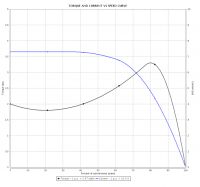Hello to all forum members!
I have a question like this:
We have a direct start engine and some current consumed there:
Let it be 5 kW. 3 phase. factor 0.8. U-400V
The engine will take 9 and mper that rating plate , a le boot more.
Let's take 6 times a factor of 4.
So 13.5 and inrush current.
I put on a Bm 10 A and choose a cable that will last 10 A.
Suppose 1 mm 2 .
In the book by Mr. Markiewicz there was such a relationship that the fuse * 1.6 is to be smaller than the short-term load capacity of the cable, i.e. 145 percent of the long-term load capacity:
Let us assume that our cable has a long-term load capacity of 10 A , i.e. 1.6x10
I have a question like this:
We have a direct start engine and some current consumed there:
Let it be 5 kW. 3 phase. factor 0.8. U-400V
The engine will take 9 and mper that rating plate , a le boot more.
Let's take 6 times a factor of 4.
So 13.5 and inrush current.
I put on a Bm 10 A and choose a cable that will last 10 A.
Suppose 1 mm 2 .
In the book by Mr. Markiewicz there was such a relationship that the fuse * 1.6 is to be smaller than the short-term load capacity of the cable, i.e. 145 percent of the long-term load capacity:
Let us assume that our cable has a long-term load capacity of 10 A , i.e. 1.6x10



